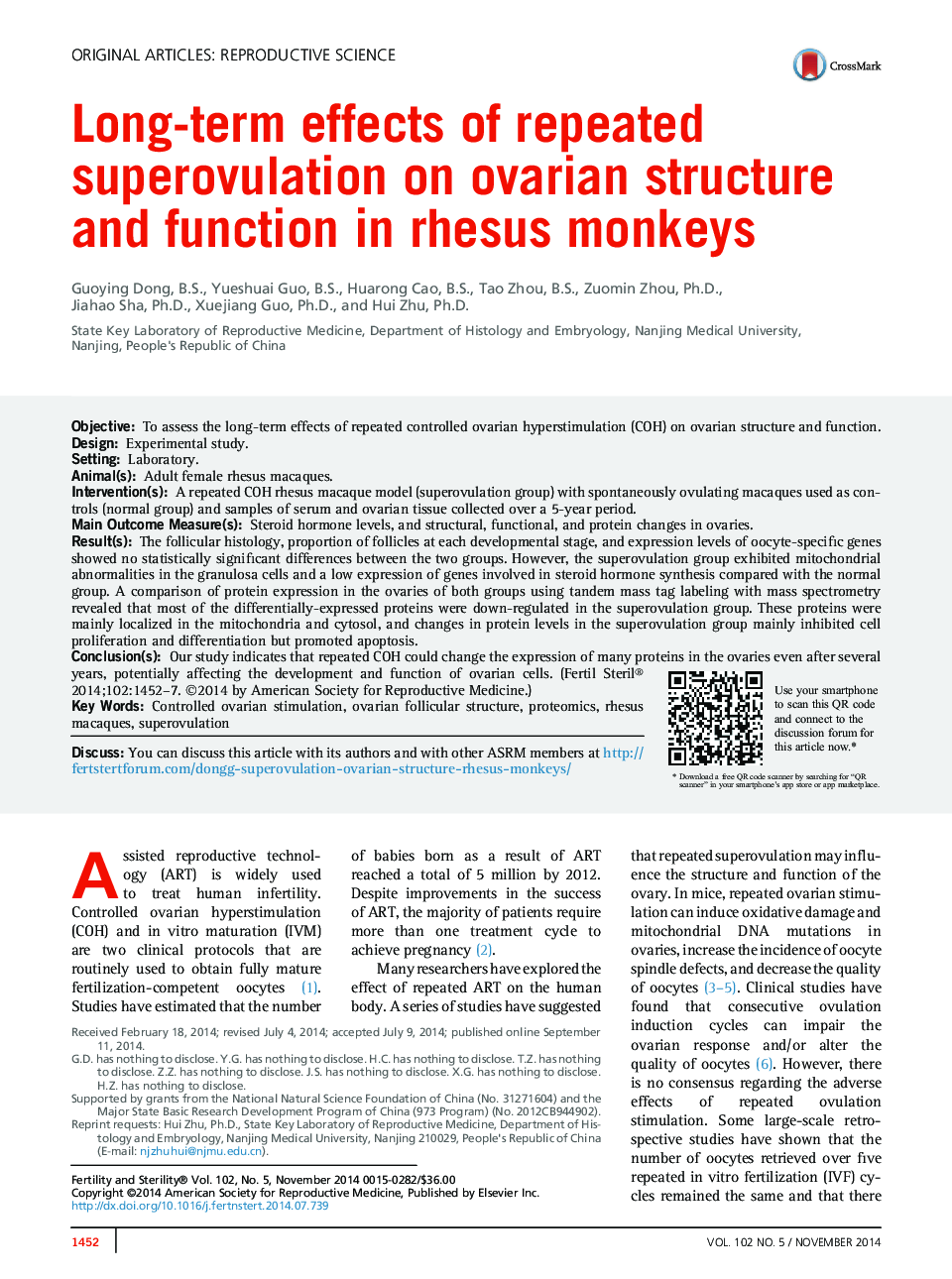| Article ID | Journal | Published Year | Pages | File Type |
|---|---|---|---|---|
| 6178811 | Fertility and Sterility | 2014 | 7 Pages |
ObjectiveTo assess the long-term effects of repeated controlled ovarian hyperstimulation (COH) on ovarian structure and function.DesignExperimental study.SettingLaboratory.Animal(s)Adult female rhesus macaques.Intervention(s)A repeated COH rhesus macaque model (superovulation group) with spontaneously ovulating macaques used as controls (normal group) and samples of serum and ovarian tissue collected over a 5-year period.Main Outcome Measure(s)Steroid hormone levels, and structural, functional, and protein changes in ovaries.Result(s)The follicular histology, proportion of follicles at each developmental stage, and expression levels of oocyte-specific genes showed no statistically significant differences between the two groups. However, the superovulation group exhibited mitochondrial abnormalities in the granulosa cells and a low expression of genes involved in steroid hormone synthesis compared with the normal group. A comparison of protein expression in the ovaries of both groups using tandem mass tag labeling with mass spectrometry revealed that most of the differentially-expressed proteins were down-regulated in the superovulation group. These proteins were mainly localized in the mitochondria and cytosol, and changes in protein levels in the superovulation group mainly inhibited cell proliferation and differentiation but promoted apoptosis.Conclusion(s)Our study indicates that repeated COH could change the expression of many proteins in the ovaries even after several years, potentially affecting the development and function of ovarian cells.
